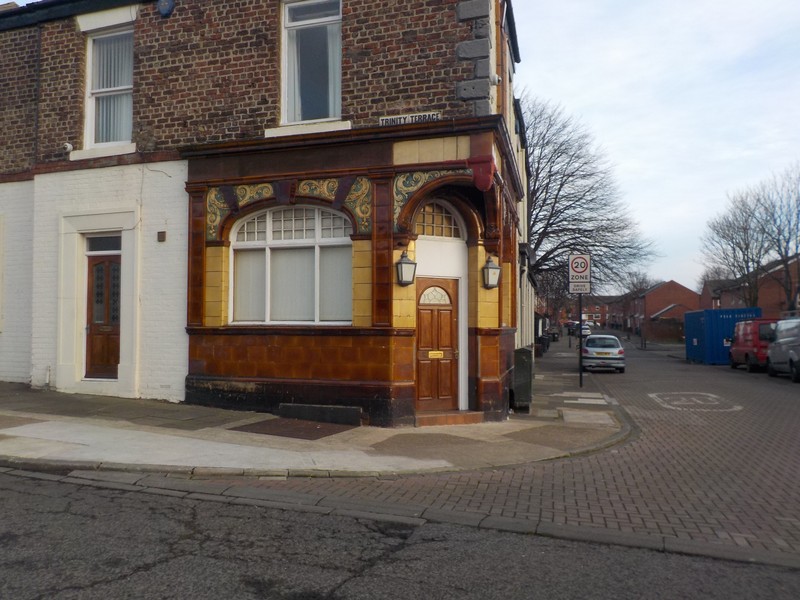My plan was/is to get a minimum of 5 days coastal walking per month, but I understand that I will need to up this target to about 7 days/ month in 2018; that’s if I want to make better progress. Anyway, I saw a small weather window in the south-west which meant ticking off another of my “use of ferries” walks to bridge the gap when I took ferries on the walk along the SWCP. I did not envisage driving through bad weather to get to good weather, but that’s what happened as I set off through sleet and rain, with most of the M5′ s fast lane snowed in. Fortunately, as I drove Somerset, the snow which had fallen elsewhere had not affected Somerset and Devon.
I was making this walk with my daughter Nicola and we had chosen to do the walk from Starcross to Exmouth. The route is served very well by train links and we opted to finish at Exmouth because of a good ‘Spoons in the town.
We got off the train at Starcross and was immediately confronted by a strong bitingly cold wind that we would have to face all the way to our bridging point. It was lovely and sunny and we could see the twin towers of Exeter Cathedral for most of the way. The actual path we followed was the Exe Estuary Trail, which also follows NCN 2.
We soon reached Powderham Castle, the ancestral home of the Earls of Devon. The park was full of Fallow deer as we passed by. At Turf we met the Exeter Ship Canal which used to carry small ships onwards towards Exeter. The canal now only contains pleasure motor and sailing vessels, some waiting at the lock for the next high tide which would permit passage out to the Exe Estuary. Our views were continuously drawn to the sound and sight of the M5 spanning the Exe valley here. The roar from traffic grew until we finally passed underneath it and continued onto towards the Swing bridge across the canal and then onto the stone Countess Wear Bridge.







After we crossed over the bridges, the fierce wind we had been facing for the last couple of hours was now at our backs. We continued along quiet lanes and footpaths into Topsham. Topsham is well-known for its architecture particularly with its Dutch inspired buildings. After making a short detour inland we crossed the River Clyst alongside the railway line on a wooden pathway of decked boards. We next passed through the small village of Exton and then alongside the perimeter fencing of the Royal Marines Commando Training camp at Lympstone. It was certainly interesting seeing the various assault courses through the high barbed wire fences. There were a number of information boards giving information on what was required to successfully complete the Commando training course.
At Lympstone we walked alongside the station and through the small village. The path was never far from the railway which we continued alongside all the way into Exmouth. An enjoyable days walk.



Distance today = 15 miles
Total distance = 3,446 miles












































